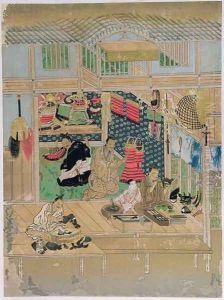Kano, Yoshinobu (Eino) Paintings
Kano Yoshinobu, often referred to as Kano Eino, was a Japanese painter born in the late Edo period, a time when Japan was on the cusp of transitioning into the modern Meiji era. Born into the prestigious Kano family in 1868, Yoshinobu was part of a lineage that had dominated Japanese painting for centuries. The Kano school, established in the 15th century, was known for its influential role in the development of Japanese painting, particularly for their contributions to the ink and wash painting style and for serving as official painters to the shogunate and imperial court. Despite his potential and lineage, Yoshinobu's life and career were tragically short-lived, as he passed away in 1889 at the young age of 21.
Yoshinobu's work and potential contributions to the Kano school and Japanese art, in general, are difficult to fully assess due to his early death. However, it is known that he was trained in the traditional Kano school style, which emphasized learning from the works of previous masters while also incorporating contemporary influences. This period in Japanese history was marked by significant political, social, and cultural changes, as Japan opened up to the West and began to modernize. These changes brought about new artistic movements and challenges to the traditional dominance of schools like the Kano.
Despite the brevity of his career, Yoshinobu's work is characterized by the blending of traditional Japanese techniques with the emerging influences of Western art, a trend that was becoming increasingly prevalent among Japanese artists of the time. His paintings, though few have been definitively attributed to him, suggest a mastery of the delicate and detailed Kano school techniques combined with an openness to experimentation and innovation.
Yoshinobu's death marked an early end to what could have been a significant career in a transformative period for Japanese art. The Kano school's influence began to wane as Japan moved deeper into the Meiji era and beyond, with new artistic movements and ideologies emerging in response to the rapid modernization and Westernization of Japanese society. Yoshinobu's legacy, therefore, lies not only in his contributions to the storied history of the Kano school but also in the symbolic representation of a turning point in Japanese art, bridging the traditional and the modern.
